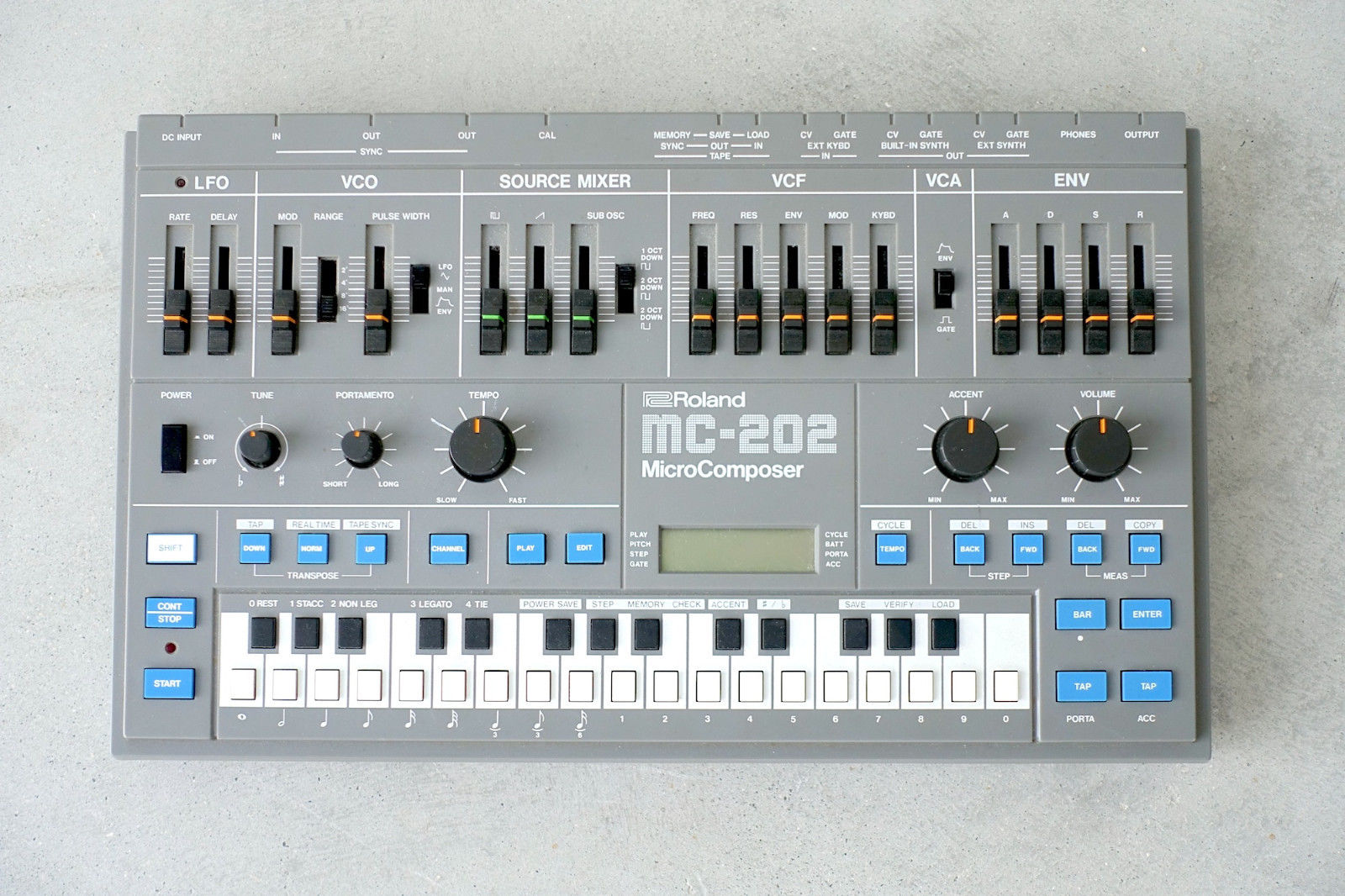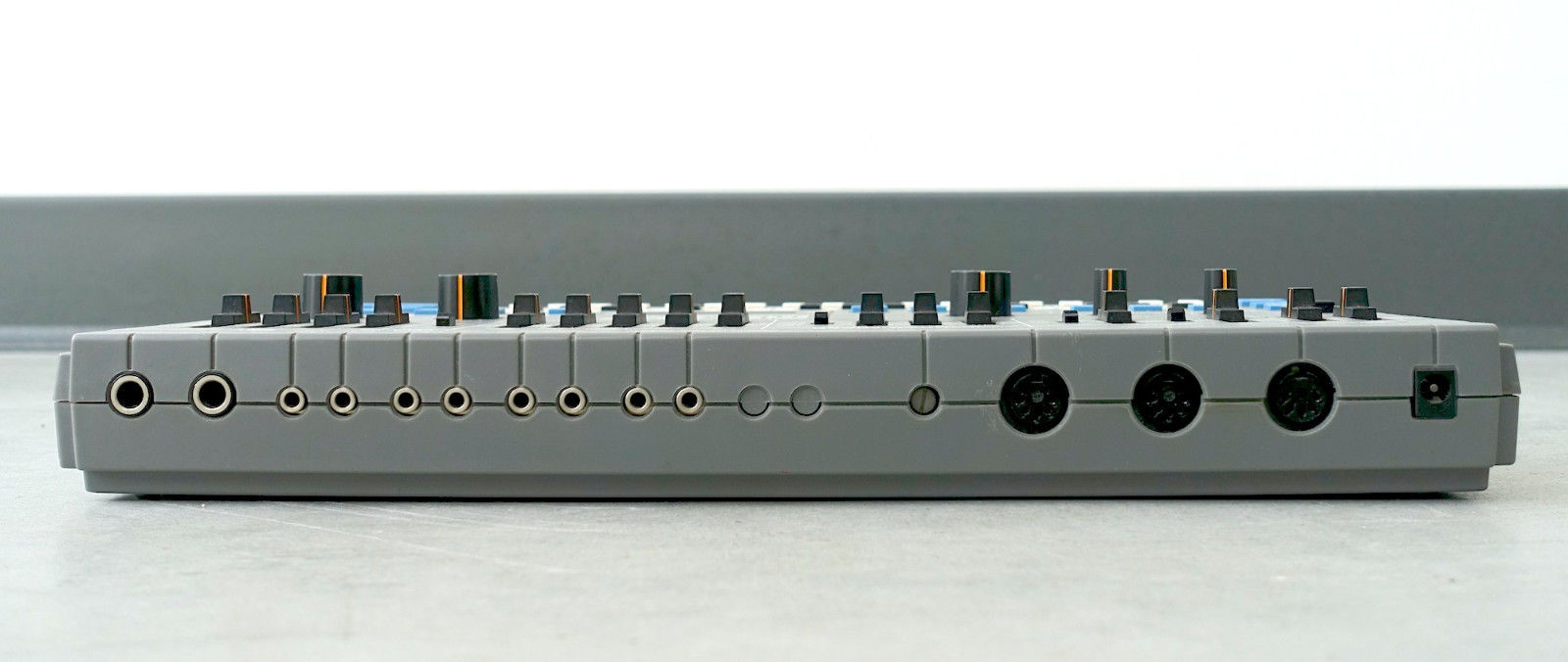Filter on ALL, SYNTH, DRUM, SAMPLER or MISC |
Total list currently 2405 items in 330 Brands |
Roland | MC-202 |
Description | The Roland MC-202 (MicroComposer) is a monophonic analog synthesizer/sequencer released by Roland in 1983. It is similar to the TB-303 and SH-101 synthesizers, featuring one voltage-controlled oscillator with simultaneous saw and square/pulse-width waveforms. The unit is portable and can be operated from batteries or an external power supply. Synthesizer The internal synthesizer features one voltage-controlled oscillator with simultaneous saw, square/pulse-width and sub-octave square waveforms. Additionally there is a 24dB Low Pass filter, an LFO and a single ADSR envelope generator. In terms of circuitry, it is nearly identical to the earlier SH-101 synthesizers but lacks the noise generator, choice of LFO shapes and modualtion/pitch bend controls. However, unlike the SH-101, it does include a delay on the LFO. The two units also share a design aesthetic in terms of the control layout, casing, lettering, knobs and slider caps. Sequencer The MC-202 includes a sequencer that can play back two separate sequences simultaneously. Two sets of CV/Gate connectors on the rear of the unit allow for routing the sequences to external synthesizers. One of the two sequences is used to control the internal synthesizer. The sequencer is programmed much like Roland's early digital MC-4 and MC-8 Microcomposer sequencers, whereby notes are entered with pitch, length and gate length. Additionally, each note in the sequence can have an accent and slide, which is similar to the TB-303 and the SH-101 and allows for so called acid sequences. The sequences are lost if the unit is powered down, however a tape interface is provided so that sequences can be stored to and recalled from an audio tape recorder. There are DIN sync inputs and outputs which allow the unit to synchronize playback, either as master or slave, with other DIN sync-equipped instruments such as the TB-303 or the Roland TR-808. The unit can also generate and sync to frequency-shift keying signals from a tape recorder. The MC-303 was built in 1996 and is a digital successor of the MC-202. |
| Brand | Roland |
| Model | MC-202 |
| Device | Synth |
| Type | Desktop |
| Engine Type | Analog |
| Engine | VCO |
| Voices (max) | 1 |
| Oscillators | 1 |
| Sub | 1 Square |
| LFO | 1 Sine |
| Engine Detailed | 1 VCO, saw and square/pulse-width |
| Filter (VCF) | 24dB Low Pass filter |
| Envelope (VCA) | 1 ADSR |
| Recording | 2 track (1 max internal use, lost on power off) |
| Keys | 32 |
| Key type | Buttons |
| Velocity | N |
| Aftertouch | N |
| CV-gate | CV/Gate I-O |
| Produced: | 1983 - 1985 |
| Legend: | Obvious | Y: Yes, N: No, N/A: Not Applicable | |
| VCO | Voltage Controlled Oscillator | DCO | Digital Controlled Oscillator |
| LFO | Low Frequency Oscillator | Sub | Sub Oscillator |
| VCF | Voltage Controlled Filter | VCA | Voltage Controlled Amplifier |
| Velocity | As with a piano, the harder you hit a key, the louder the sound, unlike most organs which always produce the same loudness no matter how hard you hit a key. | Aftertouch | Pressing a key after you activated it. Channel Aftertouch, no matter which key, it will send a Channel message. Poly Aftertouch, sends the pressure per key instead of the whole channel. |
| Values for OSC, LFO, Filter, Envelope are per voice unless stated otherwise. | |||




